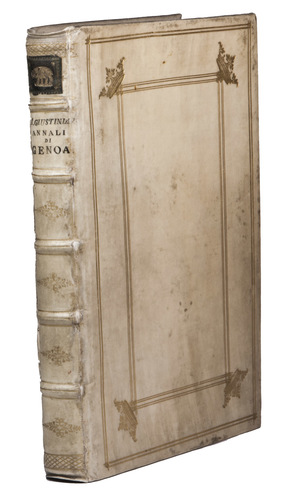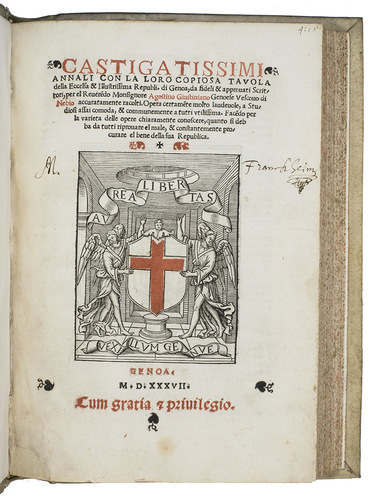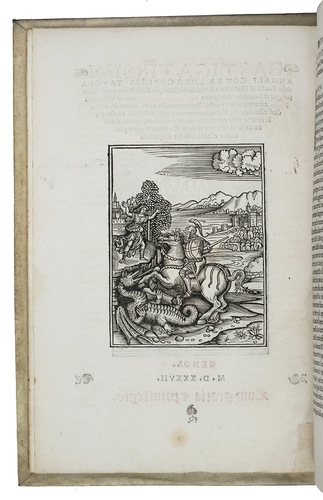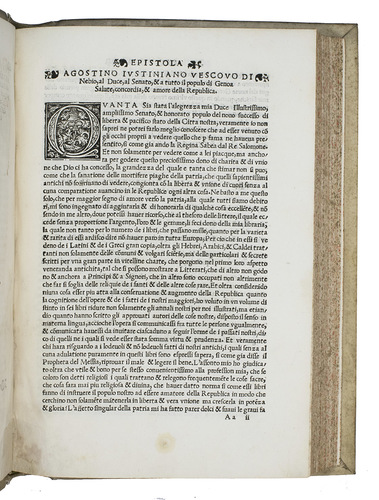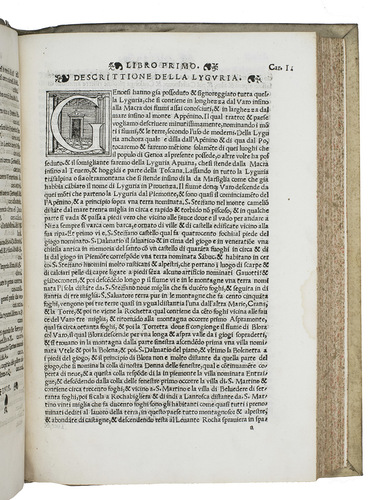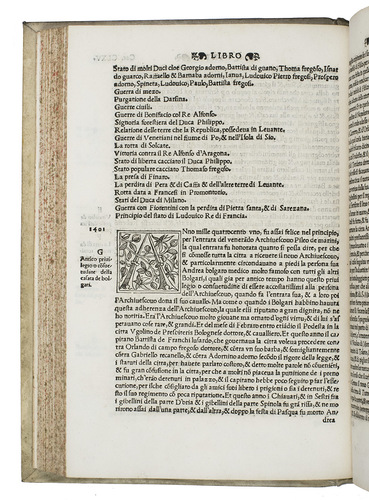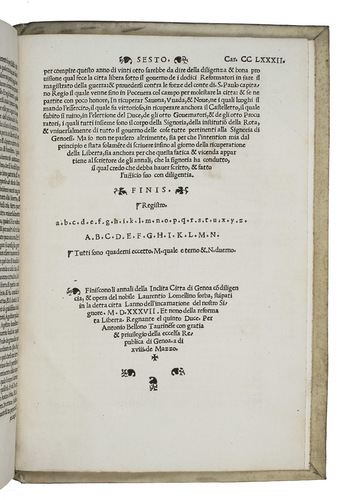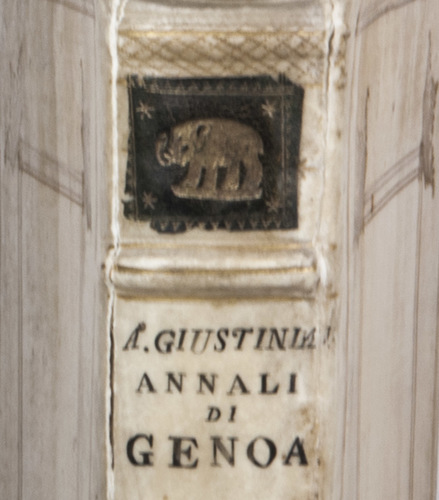GIUSTINIANI, Agostino de.
Castigatissimi annali con la loro copiosa tavola della eccelsa et illustrissima Republica di Genoa, da fideli et approvati scritti accuratamente racolti.
Genoa, Antonio Bellone, 1537. Folio. Title-page in red and black with a woodcut device incorporating the coat of arms of Genoa supported by angels (the cross in the arms also printed in red), a large woodcut showing Saint George slaying the dragon on the back of the title-page; beautiful woodcut decorated initials (some pictorial) in the text (at least 5 series). Set in roman type, with the privilege line on the title-page in a larger rotunda gothic, and with 5 different vine-leaf ornaments. Gold-tooled strong ivory vellum (ca. 1674/89? ), bound by Albert Magnus for the Dutch book collector Paulo van Uchelen, sewn on 5 supports, each board gold-tooled with an outer frame of double fillets with very small, square cornerpieces, an inner frame of 2 double fillets with small cornerpieces within the 2 double fillets and a crown in each of the four corners of the inner frame. The gold-tooled spine contains a black label with a gold-tooled elephant at the head and just below a manuscript title. Red and brown sprinkled edges. [14], 282 ll.
€ 4,500
First edition of an important work on the history of Genoa from its beginnings to 1527, finely bound by Albert Magnus. Though primarily concerned with Italian history it also discusses America, containing under the year 1493 (leaf 249) an interesting account of Christopher Columbus - a native from Genoa - called "the inventor of the navigation to the New World". This copy has a very interesting provenance: it was in the possession of the great Dutch book collector Paulo van Uchelen (ca. 1641/42-1702), who had it bound by the most famous bookbinder of the Dutch golden age, Albert Magnus. In 1970 Herman de la Fontaine Verwey noted that Van Uchelen appeared to have had many of his books bound by a single workshop following a sort of Van Uchelen house style (the 1703 catalogue itself notes the great consistency of the bindings): gold-tooled vellum, each board with a frame of double fillets, with a crown inside each corner. With an early manuscript name on the title-page in brown ink: "M. Fr[...?] L (?) Seim (?)". After Van Uchelens death, the work came into possession of Sir Andrew Fountaine (1676-1753), as the gold-tooled elephant at the top of the spine shows. He was one of the most renowned connoisseurs of his day, with unrivalled collections of classical antiquities, coins, miniatures and books. We suppose he bought it at the 1703 Van Uchelen auction. From 1725, he was Vice-Chamberlain to Princess, later Queen Caroline, and succeeded Sir Isaac Newton in 1727 as Master of the Mint.
Bifolium z4.5 is lacking in the bound book, which instead contains a second copy of bifolium z3.6, but z4.5 has been added separately in a portfolio. With minor water stains, but otherwise a fine copy, finely bound by Albert Magnus for Paulo van Uchelen. Adams G751; BMC STC Italian p. 306; Catalogus van de treffelijke vergadering van kunst en boeken van ... Paulus van Uchelen, Amsterdam, 1703, under "historici in folio", p. 24, no. 196. (auction cat. UB Amsterdam NV 63); Harisse 220; Leclerc, Bibliotheca Americana (1687), no. 642; Sabin 27518; USTC 833550; for Magnus and Van Uchelen: H. de la Fontaine Verwey, "De binder Albertus Magnus", in: Uit de wereld van het boek II, pp. 147-169, at pp. 161-162.
Related Subjects:








